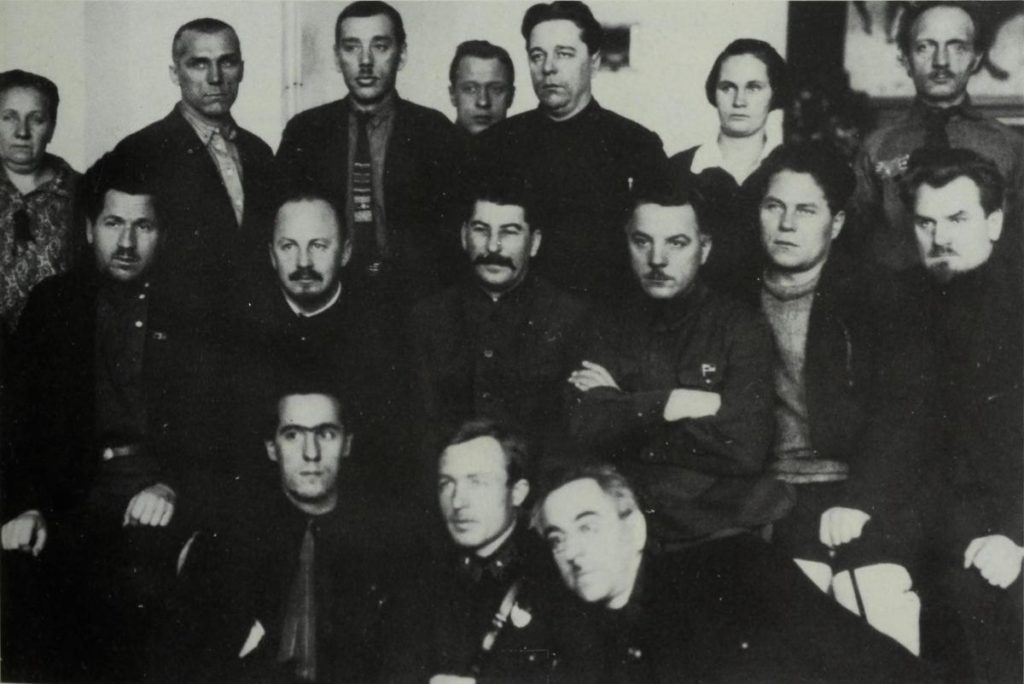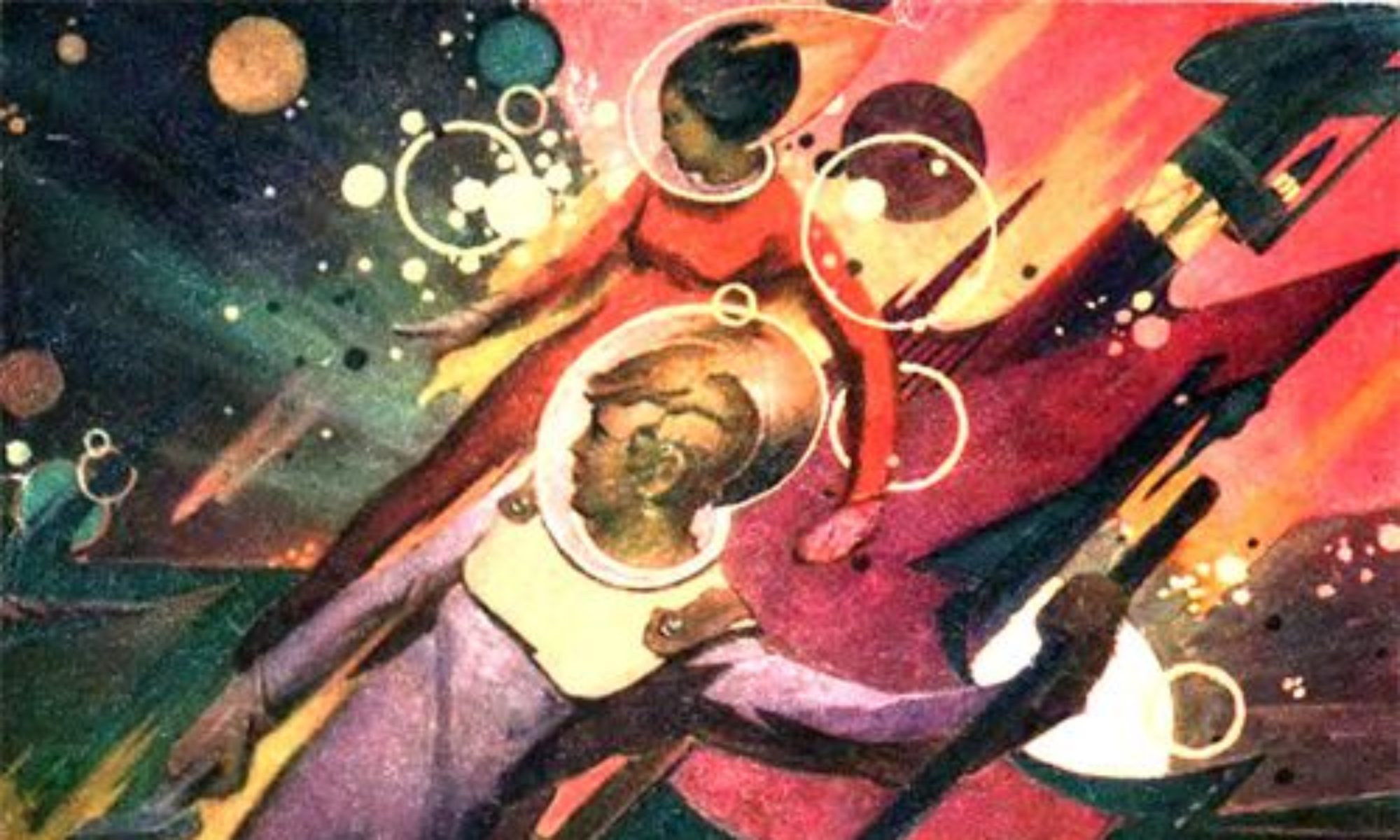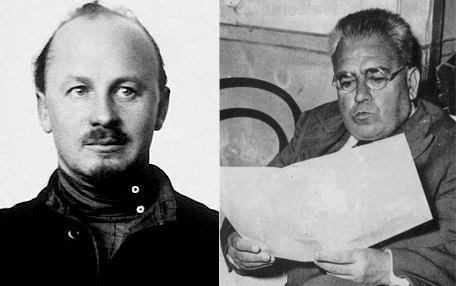Translation of and introduction to Amadeo Bordiga’s “The Solution of Bukharin” by Leon Thalheimer.

Nikolai Ivanovich Bukharin persists as a somewhat elusive character in the history of the Russian Revolution. Overshadowed by the figures of Stalin and Trotsky and their “mythic” conflict in the 1920s, the name of Bukharin was either forgotten or universally cursed until the 1970s. The study of the man and his ideas had an ambiguous meaning: on one hand, it represented the beginning a more honest and open study of the Revolutions of 1917 and their consequences. On the other hand, Bukharin was appropriated by a generation of reformers in the Eastern Bloc who turned him into the prophet of a project nothing short of bourgeois democracy and liberalism.
This tendency became more or less noticeable both in supporters and opponents of this “Bukharinism”. His most famous biographer, Stephen Cohen, seemed to find Bukharin in all attempts to reform the Eastern Bloc., from the Nagy cabinet to Dubček. The prominent Portuguese Communist Francisco Martins Rodrigues considered Bukharin to be no more than a bourgeois democrat. The appropriation of Bukharin’s legacy by the likes of Gorbachev further helped settle this image.
Nikolai Bukharin and the “Right” Opposition were accused of everything: defending the kulak, proposing the abandoning of the proletarian class party, capitulating to bourgeois democracy, fighting for capitalist restoration, and nurturing a renewed narodism [populism]. These accusations still echo for many and the history of Bukharin stays tarnished.
Amadeo Bordiga is seen in a vastly different light. Accused by all of being inflexible, unpractical, intransigent (a characterization that he himself came to partially admit, although proudly), he became the most famous name of the so-called Italian Communist Left, and more specifically of Programmismo tendency. His linear, almost mechanical writing style was entangled with a taste for poetic figures of speech, a very peculiar form of expression that suited his simultaneously dialectical and intransigent defense of Communism. The most superficial presentations of his work — such as this one, ironically — could leave no doubt: there is nothing farther apart from each other than Bordiga and Bukharin.
However, a more careful analysis would reveal the facts to be more complex. There is a much to be discovered in the depth of Bordiga’s thinking, such as his capacity to go beyond appearances and give life to Marxism in the concrete situation (much like Lenin). Both Bordiga and Bukharin were strongly grounded in Lenin’s final writings, appealing repeatedly to articles such as On Cooperation, Our Revolution and The Tax in Kind. However, as Bordiga himself admits, much of this wasn’t even Lenin’s original thought, but was already present in Marx, pointed out by Lenin in Our Revolution. The translation we now present is clear evidence of this fact.
Despite a great number of differences that undoubtedly exist between the two communists, this exact translation is important because it reveals a notable point of convergence and its numerous consequences. The importance of the worker-peasant alliance, the quickest route to complete the agrarian revolution, the best way to avoid bureaucratization and maintain proletarian power in the condition of international isolation and imperialist encirclement: these were all worries shared by Bukharin and Bordiga.
Furthermore, Bordiga, to the surprise of many, would go as far as saying that Bukharin’s “compromise” with the kulak, represented by the famous “Enrich yourselves!” was a truly Leninian compromise as outlined by Lukács in his Lenin.
The translation that follows is a very short extract of Amadeo Bordiga’s Economic and Social Structure of the Russia of Today [Struttura Economica e Sociale della Russia d’oggi]. This work is of great importance and represented the highest point of Bordiga’s intriguing analysis of the Russian Revolution, with its double character as a bourgeois and proletarian rev with its isolation leading to the strangling of the proletarian one. The chosen segment is very short, but crucial nevertheless, as it contains key parts of the whole argument. We recommend, after reading this extract, reading the larger translation made available by Libri Incogniti.
The Solution of Bukharin by Amadeo Bordiga, 1956-12
Translation of the chapters 111, 112 and 113 of Economic and Social Structure of the Russia of Today, Amadeo Bordiga. Traduction française: STRUCTURE ÉCONOMIQUE ET SOCIALE DE LA RUSSIE D’AUJOURD’HUI. 2° partie : “Développement des rapports de production après la révolution bolchevique” (1956-57). Published in italian in Il Programma Comunista N° 25 (december 1956).
When later Stalin was asked which fraction was worse, Left or Right, he replied that they were both worse and he made it clear that his plan was to crush both of them. In the meantime, what was the “Stalin” fraction? It was the one that consisted in not having a tendency, in not respecting principles, in administering the state for the state, in governing Russia for Russia, in replacing the position of class and the international position with a national and then imperial position: even assuming that neither Stalin nor his followers were originally aware of it.
It seems strange to those who write History “by taking an interest in people” that, from 1927, the right and the left came together to engage in an unequal struggle against the “leadership”. It would be strange to think that in insulting Stalin (ten times less than it should have), the Left was insulting a Right deviation in the theses from which Stalin, true weather vane of politics, had drawn before drawing, as we shall see, from the doctrine and theses of the Left But it is not strange if one makes history by the school of Marx and Lenin and not in the manner of Tecoppa. The explanation does not lie in Joseph Stalin’s “maffioso character”, but it rather another proof that the revolution had been historically “shortened” from a double revolution to a bourgeois-only revolution, wherein the latter the leaders cut each other’s heads to steal ideas and brains.
Trotsky himself, tied to the traditions of this struggle, devalued the “Right” even in his subsequent works, and he failed to understand the truth: that the Left and the Right were both on the ground of the Marxist principles, and that the “Center”, in each of its successive turning points in Russian as well as international politics, moved away a little more each time.
Trotsky has the immense merit of having, since 1923, individualized this demonstration which was to kill the Marxist party which alone had seized power: the handling of the apparatus of State, cruel and cold machine built to exert the terror on the class enemy, against the party apparatus – and such a pathological crisis stemmed from the retreat of the external revolutionary forces and the mistrust of an overwhelming non-proletarian population towards these revolutionary forces. On this question, the Italian left was completely with Trotsky – but for motives that have nothing to do with later “Trotskyism”. These episodes of abuse did not hurt the non-Marxist demand for “democratic respect for grassroots consultation”, they hurt the Marxist doctrine that the revolutionary dictatorship does not have as physical and concrete subject the people, nor even the national working class in general, but the international and historical communist party.
The path of the revolution that retreated from the socialist revolution to the bourgeois revolution was then marked by the maneuvers inflicted by history – and not by the caprice of the “non-collegiate” Stalin, nor by the defamed “capitulators of the Right” – at the machine of the Russian state. When Right and Left saw that most of the Bolshevik tradition and world communism was in danger, they united, but belatedly, after having suffered the end of the Curiatii – in the order Trotsky, Zinoviev, Bukharin – in the struggle against the Stalinist counter-revolution that ultimately killed them.
So let us not be astonished if we rehabilitate Bukharin, not of the accusation of having been an agent of the foreign bourgeoisies — a charge that the disgusting exterminators themselves had to swallow as the insane who eat their own shit — but of the strong criticisms that Trotsky himself addressed to the famous “Enrich yourselves!”.

Marxist Appeal to the Dialectics
The first exigence of the Soviet Republic was to survive, either by means of the world revolution or by the “existential” means of the Russian State and the people of Russia; and this demand dominates the terrible historical dilemma of 1926. We showed in due time that if Bukharin followed Stalin in this historical orientation it was because he conceived of this withdrawal as a strengthening of Russia in view only of a gigantic “revolutionary” war against all the capitalist states that were trampling on the European working class. And it must be said that even Stalin proclaimed such a perspective on the eve of the Second Imperialist Conflict in which he had the brilliant idea of applying the same policy against the imperialist states as he had used against the internal “fractions”: exterminate them in several stages and remain the sole victor like Horatius Cocles! Strayed out of the way of the party and of the doctrine towards which he manifested a congenital impotence once he could no longer “steal” the ideas from the corpses, Stalin, once dead, paid dearly for all this by the humiliation that he received from those who the State Monsters of Capital did not want to kill but to imitate in a common race to the exploitation of the world, hand in hand, even if they have the faith of the thieves of Pisa .
So the economic problem is to survive. Which means, as we have said, finding a formula to truly connect industry and land — and we know the meaning of the transition from the formula of War Communism to the formula of the NEP, from the first to the second stage. It is now a question of understanding the development between the second and the third stage, stages of which we have given this series.
Center, Left, and Right were, in 1927, firmly attached to the theory of Lenin: that agriculture under the form of small enterprises is the death of the socialist revolution.
Lenin was indeed forced to accept, from a Marxist viewpoint, the anti-Marxist programme of the Socialist-Revolutionaries. He accepted this without hiding it, without ceasing to show that it was radically anti-Marxist. Only then were the Bolsheviks able to take power and lay the bases for the foundation of the Communist Parties of the world — Paris was well worth this Mass. However, the system of petty production had expanded by itself; which means that the potential of the countryside had taken huge steps backward, both technical and political.
The formula of slavery of the peasants by the workers’ state, foolishly advanced by some members of the “Left”, had failed. From one who does not produce, first because he cannot, then also because he does not want, nothing can be gained; neither by coercion nor by expropriation nor by murder.
And yet the dilemma remained: either starve or break out of rural fragmentation.
The nationalization of the land, and even more the statization of land ownership, serves only to prevent the formation of a new agrarian “great property”. Unfortunately, for the same reason, it ends up preventing the passage of the small to the big “enterprise”, and it locks the land in the technical limitations of its culture. But everyone wants the big agricultural enterprise that the industry could develop by providing it with new equipment – on the condition that the industrial workers be fed!
Trotsky and Zinoviev remain on the ground of Lenin: to pass, without coercion if possible, the very small peasant enterprise to enterprises where the collective work is directed by the State (the sovkhozes), that is to say with the State-owned land and the State’s exercise of capital (and so they are for intense industrialization).
Stalin wants to allow, by denationalizing the land, the reform of vast land possessions where a big farmer organizes collective production, obviously with employees, the rent going to the owner.

“Enrich yourselves!”
Bukharin defends, like the Left, the legal nationalization and is not for free property. The latter is a safeguard position not to fall back into the past and not lose power. But he understands that for big industry you need big capital. He sees that the industry can hardly start producing manufactured consumer goods (in addition to the production of goods for military use, necessary for the coming conflict, for him “offensive” – his dream rejected by Lenin at the time of Brest-Litovsk), at most it can produce capital goods to expand the industry itself, but not to transform agriculture. His formula is that the land remains in the state but the agrarian capital is formed outside of it.
Trade and the N.E.P. had already given rise to capital accumulation, but in the hands of traders, speculators who were no longer legally smugglers but Nepmen, hated by the peasants (but mostly because of the reactionary attachment of the latter to the management of the plot). This capital, threatened both socially and politically, is sterile from the point of view of production and the improvement of its technical potential.
Bukharin, who was often mocked by his master Lenin, knows his Capital perfectly. He knows that the classical primitive accumulation was born of the agrarian rent, as in England and elsewhere, and it is from this origin that the “bases” of socialism were born. He is nourished by other correct theories: that it is madness to think of having a tremendously expanding business, to treat in a mercantile form, as Trotsky justifies it, the industrial production itself, and not to see the growth of capitalist forms, state or private, but always capitalist. If in industry passing from private forms to state forms represent a progress in the countryside, yet there is no capital, neither private nor owned by the State, it is laughable to think that one can have not only socialism but even simply the statization of capital.
Bukharin is in line not only with Marx but also with Lenin. In the countryside you have to go from form 2 to form 3: from peasant petty production to private capitalism.
The land remains in the State, and the peasant rich “in land” disappears (it is not true that Bukharin and his people defended the kulak), but it is the “farmer of the State” that appears and the latter, with its working capital and its employees (in forms which are not radically different from the wage-earning of State-controlled and then owned factories), it produces on its own land a very large mass of products for the general economy, and it pays the rent to the state and no longer to the former landowner.
For the size of the average enterprise to grow it is needed, clearly, that the average enterprise capital grows as well as the number of rural proletarians. This result cannot be achieved if the agrarian entrepreneur does not accumulate and become larger. Another correct thesis, firm in the intelligent mind of Bukharin, was this: no State has the function of “building” and organizing, but only of forbidding, or of stopping forbidding. By ceasing to forbid the accumulation of social agrarian capital (Marx: the capital that is accumulated by individuals is only part of the social capital) the communist state takes a shorter route to climb the scale of forms, the ladder of Lenin.
The formula, the form of social structure that emerged from history, the kolkhoz, leads less rapidly from peasant fragmentation than the solution proposed by Trotsky (and Lenin), and especially that of Bukharin – and by affirming this we do not say that there was a choice between three possibilities when the controversy exploded. And this formula of the kolkhoz was not invented by Stalin, who was only a fabricator of formulas a posteriori with demagogic effect in which there is no genius (which needs parties and not heads in modern history, and perhaps ever) but great political force.
Yes, the brave Bukharin shouted: “Enrich yourselves!” But Stalin did much worse and was about to shout: “Make money from the land! Leave us only the industrial State, the armed force!”. He did not understand that whoever has the land has the State.
The phrase of Bukharin, which everyone remembers without being able to reconstruct its doctrine (it is difficult to do so from the texts), has this scope: “We open the doors of the land of the State to you; enrich yourselves with capital of the agrarian enterprise, and the moment we expropriate you from what you have accumulated will arrive more quickly, passing also in the countryside to step four: State Capitalism”.
For the fifth step, Socialism, one needs neither laws nor Congress debates, but only one force: the World Revolution. Bukharin did not understand it then and this was serious.
Stalin used Bukharin’s thesis to defeat the Marxist Left. When Bukharin saw that history pushed Stalin not to choose routes to economic Socialism but to bring the political state back to the capitalist functions, both internal and external, there was no longer any difference between the Right and the Left, nothing remained right of the Center, and all the revolutionary Marxists were, for reasons of principle much deeper and more powerful, against Stalin. They were certainly vanquished, but they belong to the fertile series of all crushed revolutions whose revenge will come, a revenge that can only be global.


124 Replies to “The Solution of Bukharin by Amadeo Bordiga”
Comments are closed.